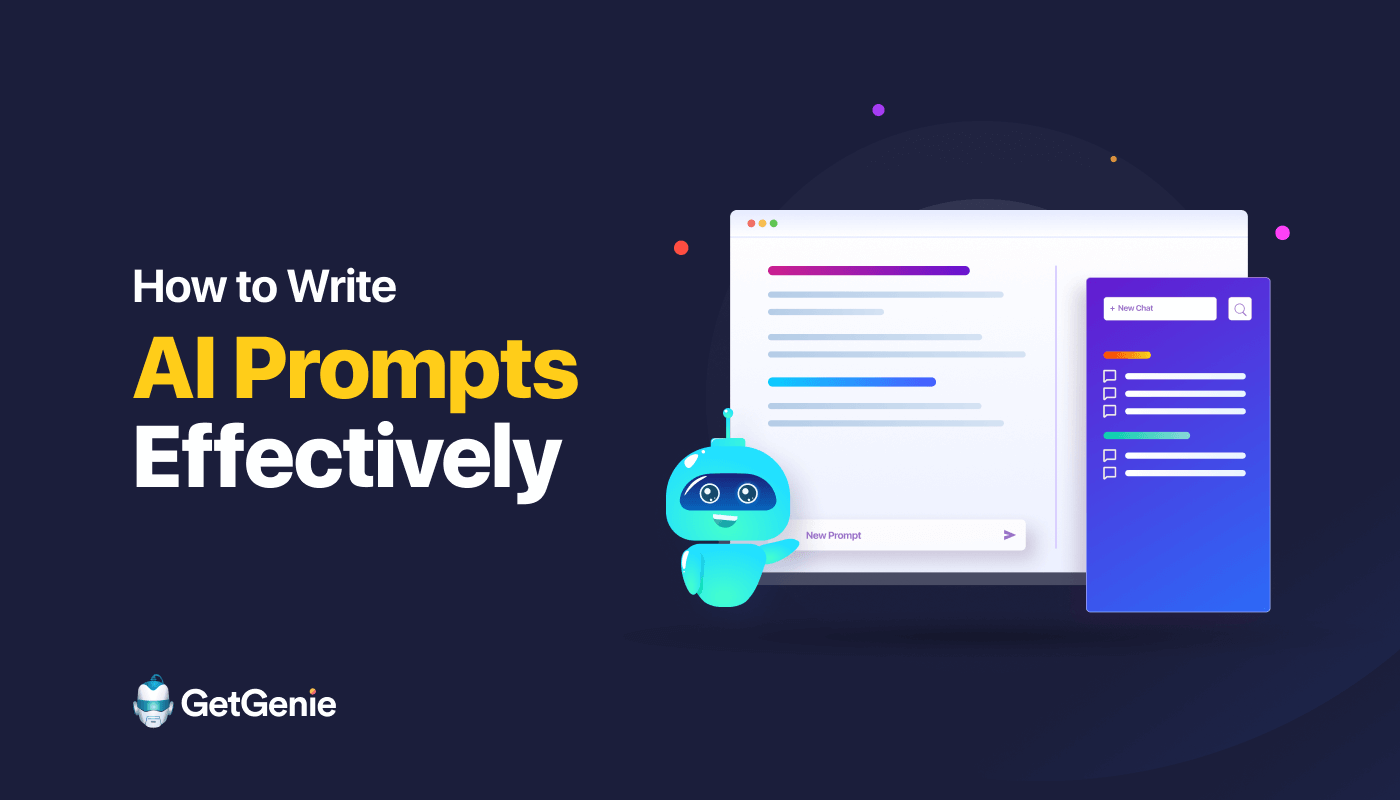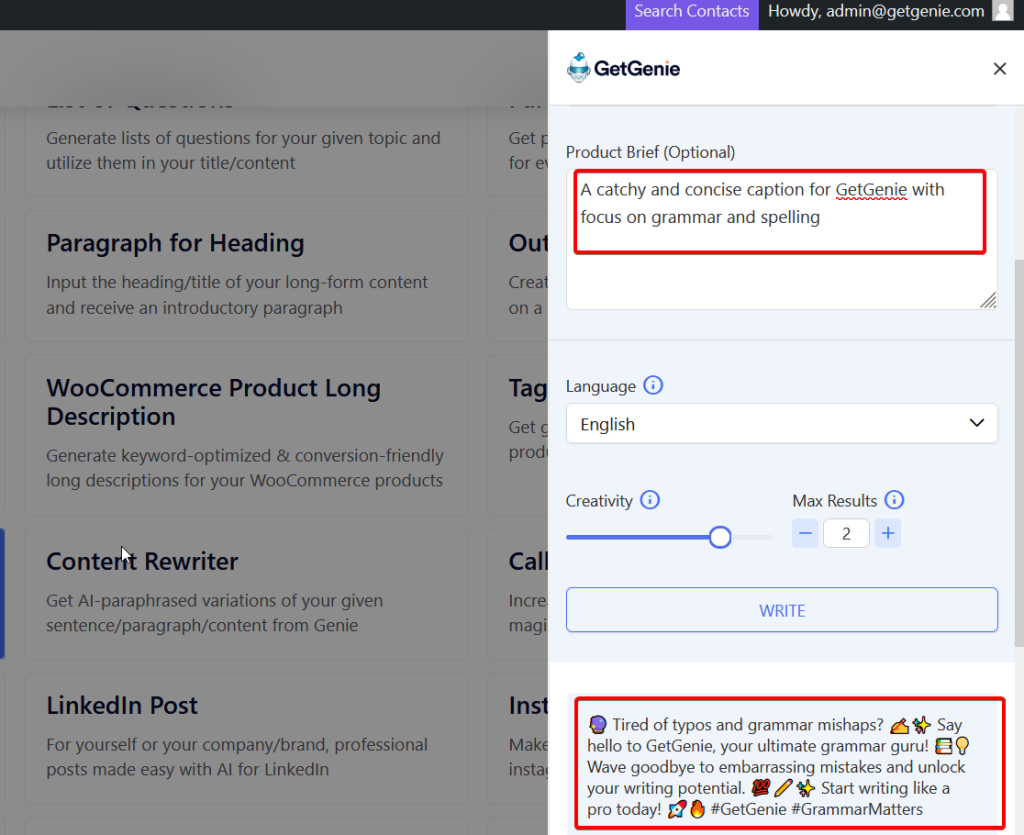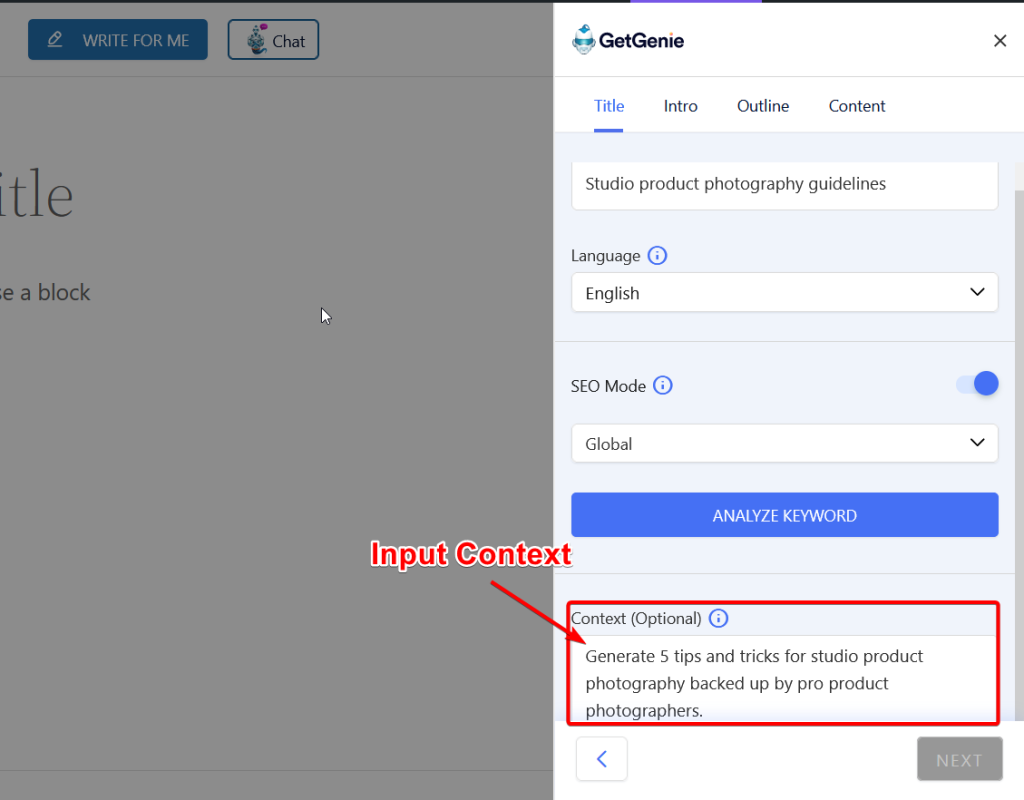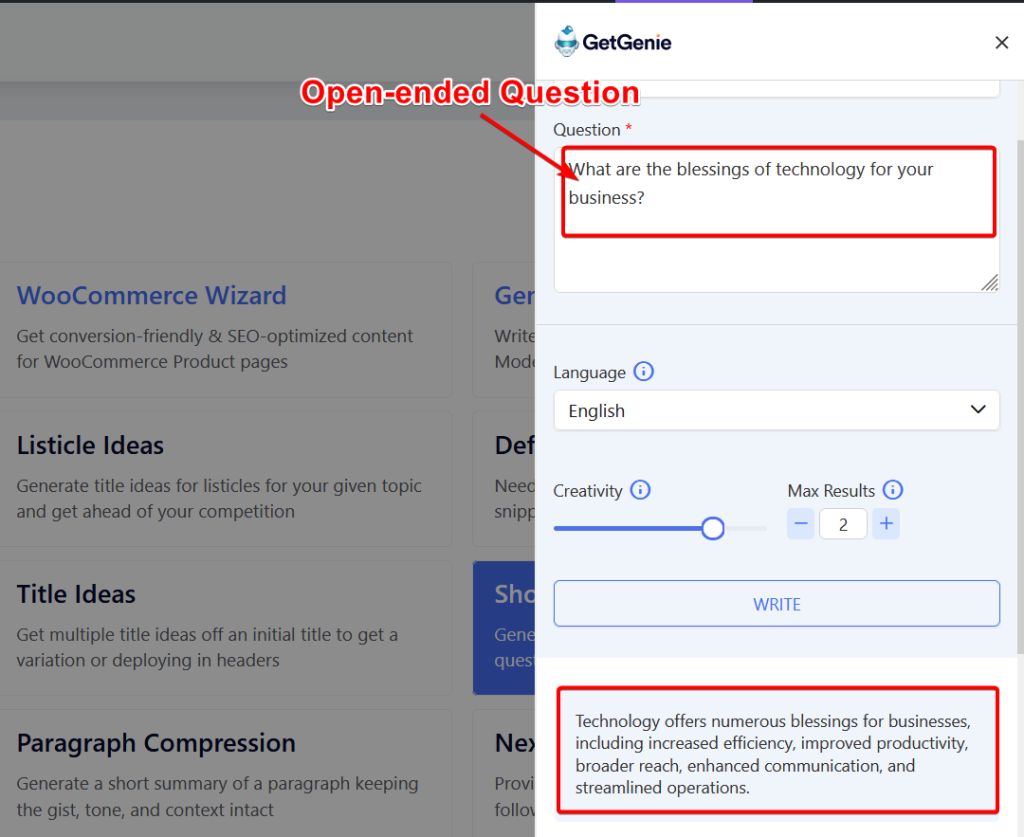How to Write AI Prompts to Get Effective Outputs Generated

You have picked up a top-notch AI writing tool boasting rich and handy features. The tool can also generate peachy and people-first content. But quality content will peep out only if you input AI prompts precisely and convincingly.
So, how should you write AI prompts in your AI tools to get quality outputs? Worry not as this is exactly what I will pinpoint here with useful tips and tricks.
- A Snapshot of AI Prompt
- AI Prompt Types
- How to Write AI Prompts for Better Output?
- Evaluating Prompts in Generating Desired Outputs
- Top 6 AI Prompt Tools
- AI Prompts for Content Generation Examples
- AI Prompts for Data Analysis Examples
- AI Prompts for Client Service Examples
- Common Prompt Mistakes and Prompt Optimization Tips
- It's Your Turn
A Snapshot of AI Prompt
Simply put, an AI prompt is a set of instructions or inputs fed to an AI tool to produce output. The output can be anything from generating content, interpreting data, and simulating customer responses. Without using a prompt, you can’t expect to get output from an AI tool.

Let’s say you have visited a restaurant. A waiter will serve food at your table only after you place an order for the food you want to have. It’s your job to decide from the food menu what you want and convey it precisely to the waiter.
AI prompt is similar to a restaurant order. You have to make up your mind regarding what you want from an AI tool and feed your input accordingly.
With the help of prompt engineering, you can watchfully design and refine your prompts to get your desired output. Designing AI prompts entails experimenting with words & phrases, context, and conditioning methods to ensure the accuracy and relevance of your text instructions.
For example, “You are a professional resume writer. Rewrite this sentence to be more formal…”
AI Prompt Types
AI prompts come in different types, each serving various purposes and requiring specific approaches.
The table below shows some of the most common prompts, alongside examples related to AI content or writing tools:
| Prompt Genre | What is it? | Example of Prompts |
| Completion Prompts | Entails providing an unfinished sentence and asking the AI model to create a coherent continuation. | “Complete this sentence: AI content tools are…” |
| Question Prompts | Involves posing a specific question prompting the AI model to bring out a related response. | “How do AI content writers work?” |
| Instruction Prompts | Indicates feeding clear instructions for the AI model to follow, specifying the prospective outcome. | “Write a step-by-step guide on how to generate optimal outcomes from AI writing tools.” |
| Comparison Prompts | “Write a step-by-step guide on how to generate optimal outcomes from AI writing tools.” | “Compare the utility of AI content tools with human touch vs. without human touch.” |
| Creative Prompts | Asks the AI model to generate creative or innovative ideas, stories, and artistic outputs. | “Imagine AI writing tools replace the human writers.” Write a short story on the topic with a creative and artistic touch. |
| Translation Prompts | Deals with providing text in one language and asking the AI model to translate it into another. | “Translate the term ‘Benefits of AI writing tools in Spanish.” |
| Summarization Prompts | Instructs the AI model to turn a given text or info into a curtailed text. | “Summarize the perks and challenges related to AI writing tools in 3 succinct points.” |
| Dialogue Prompts | Concerns with generating responses from different perspectives or characters. | “Generate a chat between 2 AI researchers talking about the opportunities of AI in content marketing.” |
Why Well-written AI Prompts are Crucial?
Imagine you are in a new country with all the road directions and signboards in a language unknown to you. What would be your state? You would be befuddled, right? Well, poor and ineffective prompts are like those incomprehensible directions and signs to the AI.
No doubt, artificial intelligence is advancing as time progresses and trying to grasp your complex prompts, but to get the best output from AI tools, you must feed well-designed and refined prompts. Structure your prompt in a way that you are introducing a formula to AI, Goal + Context + Instruction + Constraints.
For example:
“Write a 100-word summary (constraint) of this article (context) for a LinkedIn post (goal). Be engaging and professional (instruction).”
A top-notch AI prompt bridges the gap between user intent and AI comprehension. It shapes things in a way that the AI can fathom, so you can achieve a better result way more quickly.
How to Write AI Prompts for Better Output?
In order to get superior output from AI tools, you must follow certain guidelines. From understanding your AI tool’s abilities to giving instructions, all these factors matter to get high-quality outputs from AI tools.
Here is the proven AI prompt guide on how to write AI prompts for getting quality outputs from your AI tools —
Understand Your AI’s Capabilities
It’s super important to understand the diverse features and functionalities of your AI tool, its strengths and shortcomings. Make yourself fully aware of what it can and can’t do.
This knowledge will help you tailor your prompts that manipulate the AI’s full potential and skip instructions the AI bot might fumble with.
Figure out Your Objective
Prior to writing an AI prompt, it’s key to clarify what you want your AI tool to create and why you want it to create that output.

What goal are you trying to notch up with the content? What should your target audience know after going through the content? Do you want them to click a link or make a purchase?
This will let the AI tool bring out the best possible content, alongside matching the AI-generated content with your brand goals.
Use Concise Text with a Focus on Grammar & Spelling
Your AI prompt should be clear and abridged to ensure the AI model grasps the task or request precisely. This will also let the AI tool avoid all sorts of confusion.
Along with language clarity, also focus on avoiding grammatical errors and spelling mistakes as they can puzzle the AI bot. The same goes for the AI chatbot of ChatGPT.

So, always proofread your prompt to make sure your grammar and spelling are accurate and the language is easy to grasp. Also, don’t forget to avoid the use of abbreviations and slang terms to keep things simple for AI.
Set the Context and Background Info
To make it easy for AI to capture the subject matter, provide the necessary context and background information in your prompts. This will also help the artificially intelligent bot generate more contextually relevant responses.

Pose Open-Ended Questions
Asking close-ended questions or “yes or no” questions tends to result in shorter response generation than asking open-ended questions.
For example, instead of asking “Is technology good for your business?”, try asking “What are the blessings of technology for your business?”.

Such questions will prompt an AI tool to answer as elaborately as possible, maximizing your satisfaction.
Feed into Specific Instructions and Guidelines
Incorporate specific instructions and guidelines in your prompts to instruct the AI model for generating outputs that align with your preferred requirements or objectives.
Here is an example that will clarify the point —
👉 Generate a content piece on “social media plugins” (Without Prompt Engineering)
👉 Generate a catchy content piece on the “utility of social media plugins” with a professional tone in 2 short paragraphs based on user preference. (With Prompt Engineering)
The first sentence is messy with no instruction on specificity, context, length, or style. Contrarily, the second sentence encompasses all these elements, making it easy to understand for AI.
Evaluating Prompts in Generating Desired Outputs
Prompt evaluation is assessing how well a given prompt works in instructing an AI model to generate desired outputs. This typically encompasses:
- Applying the prompt and monitoring the output
- Checking the precision and relevance of the response
- Assessing if the AI model followed the prompt’s intent
- Likening the output to your expected result
Top 6 AI Prompt Tools
- PromptPerfect — Single prompt generator for all AI tools
- Phraser — for using others’ prompts to inspire your own
- WebUtility — Generates elaborate ChatGPT prompts
- AI Text Prompt Generator — For amateur users of AI art tools
- 52 Prompts — Creative text prompt generator
- Easy-Peasy — Streamlines your image prompts
AI Prompts for Content Generation Examples
- Write an engaging email to a client who has shown eagerness in picking up our AI content tool, but has said that they’re unable to commit at this time because of budget constraints.
- Write a 700-word speech script accepting an award for “The Employee of the Year.” Include a number of jokes that only marketers would comprehend.
- Craft a 2,000-word blog post about the recent tendency towards adopting cryptocurrency.
- Compose a fetching intro for an article dealing with the pros and cons of remote work. Tap into a catchy metaphor to kick things off.
- Assist me in generating enticing social media captions for all the products of our brand, based on their USPs, key features & benefits, and pricing.
AI Prompts for Data Analysis Examples
- Analyze the relation between ad spend and revenue for the year 2023.”
- Interpret the user engagement metrics from our latest email campaign.”
- Perform an analysis of our website’s monthly organic traffic against industry benchmarks.
- Analyze our sales data sorted by geography and product for the last year.
- Figure out the maximum traffic source of our online store and highlight peak sales periods.
AI Prompts for Client Service Examples
- Successful businesses center around quality client service and AI can be instrumental in streamlining it.
- Generate convincing replies to client questions about our product’s features.
- Our product was updated lately which brought forth a number of questions in our clients’ minds. Draft a response to each question within 250 words clarifying that the change is due to the app update and that they can discover all the old features under the “Archive” section.
- Create an empathetic response to a complaint lodged by our client for late delivery.
- Write a comprehensive FAQ section that navigates potential user inquiries about our new subscription model. The details are here: A, B, C.
- Produce a sequence of 3 follow-up emails post-purchase that guarantees our clients feel appreciated.
Common Prompt Mistakes and Prompt Optimization Tips
Utilizing the power of AI starts with the right prompts. There are prompt mistakes you should avoid and optimization tips to ensure accurate results.
Common Prompt Mistakes to Avoid
Don’t include these things in your AI prompt:
- Being too vague
- Asking multiple things in one prompt
- Using unclear instructions
- Not specifying tone, length, or format
Prompt Optimization Tips
Add a brief section on:
- How to refine prompts based on output
- Iterative improvement (trial and error)
- Asking the AI to critique or revise its answer
Briefly mention:
- Avoid biased instructions
- Don’t generate harmful or misleading content
- Be responsible and transparent in your results
How to write AI prompts for images:
- Be specific with your subject so that AI can properly visualize. Instead of using a generalized term, use is more specific one. For example, mention the British Shorthair cat instead of mentioning “Cat”.
- Specify the artistic style of the result you prefer. For example, you can include pixel art, photorealistic, 3D render, etc.
- Detail the environment of the image you desire. For example, you can include a bushy forest.
- Specify the lighting of the image to set the mood. You can include neon lights.
- Specify the camera angle.
- Include descriptive adjectives in your prompt.
- Mention the specific ratio of the image.
It’s Your Turn
Artificial intelligence is serving up tons of perks & benefits for enterprises and in other fields. But these aren’t happening automatically or by fluke. These are occurring based on your prompts. The higher the quality of your prompts, the better your outputs are.
So, you can’t afford to compromise on communication with your chosen AI tool. The write-up has brought together the ins and outs of AI prompts for your benefit. Also, I have cataloged some effective and proven AI prompts to help you reap the benefits of your AI tool.
Now, you fully know how to write AI prompts, right? It’s up to you now to make the best use of it and see your AI content making the difference, regardless of the content type. Avail of GetGenie and feed into AI prompts precisely to have quality text and images generated!

